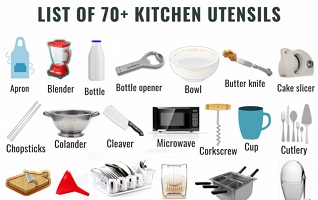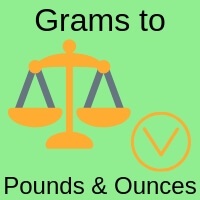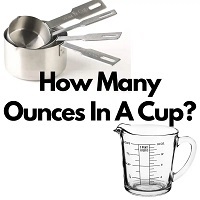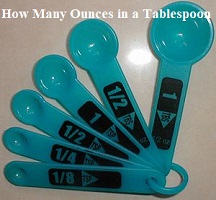Different Types of Kitchen Measuring Tools & Scales
Different Types of Kitchen Measuring Tools & Scales

- List of Kitchen Measuring Tools for 2023
- Kitchen measuring tools drawing and worksheet
- Best Kitchen Measuring Tools Ideas
Measuring equipment for use in the kitchen ~ measuring tools for cooking meaning
In order to accurately measure an ingredient for use in creating or constructing a dish, cooks utilize measuring equipment.
Usually, measurements are made in terms of weight or volume, however, they occasionally also be made in terms of length (for example, cinnamon sticks).
The purpose of measurements
Measurements are used to accurately describe a dish’s characteristics so that it can be effectively replicated by another person. The necessary measurements are obtained by following a recipe’s instructions, which are normally written down.
Kitchen measuring tools use
Kitchen measurement equipment is necessary to acquire the perfect ingredient blend for any dish.
Some people may struggle when they try to cook because they use an incorrect amount of ingredients. The idea of a pinch of this and a dash of that may work for some foods.
But not all types of cooking respond well to this strategy. Measured ingredients are necessary for some meals, particularly baked goods. For baked goods to turn out nicely, cooks must accurately measure the ingredients.
The secret to great cooking is weighing the components, yet measuring ingredients has not always been a popular practice. In actuality, a lot of old cookbooks don’t include precise measurements.
Kitchen measuring tools with Names
As an alternative, people only mention consuming a “cupful” of chili or a piece of butter “the size of a nut” or “sufficient pepper”.
But times have drastically changed, and nowadays, when cooking, people prefer metric measurements.
Being a skilled cook requires more than just trusting your gut; it also requires logic. You simply cannot enter what you believe or feel will work for this reason.
Mixing together the proper elements in the proper quantity is essential. After all, finding the proper balance is everything!
So, you might be wondering what cooking gadgets and measuring tools can help you get a recipe that is well-balanced.
Fortunately, we have gathered them all in one place for your convenience in this blog post.
Types of Measuring Tools and Equipment in Kitchens
Below you will find the following:
- Kitchen measuring tools with names and pictures
- Measuring tools used in baking
- Measuring tools used in food processing
- Liquid measurement tools
- Types of measuring spoons
- Types of measuring cups
Types of kitchen measuring tools with Names

To duplicate any recipe you may come across, you will need a variety of measurement equipment for baking or cooking.
Using the proper measuring equipment will make your recipe successful whether it is written in imperial or metric measures.
Here are some examples of measuring implements that you might use when baking or cookie
Measuring cup
A measuring cup is a culinary tool that is generally used to calculate the amount of liquid or bulk solid components, such as flour and sugar, in recipes, especially for quantities beyond 50 mL
Additionally, liquid detergents, bleach, and washing powder are all measured using measuring cups.
Measuring spoon
When cooking, a measuring spoon is used to tally the amount of a liquid or dry ingredient. Plastic, metal, and other materials can be used to make measuring spoons.
They come in a variety of sizes, such as teaspoons and tablespoons.
Weighing scale
A scale or balance is a tool used to determine mass or weight. These are also referred to as weight scales, mass scales, weight balances, and mass balances.
The conventional scale is made up of two plates or bowls suspended from a fulcrum at equal intervals.
Thermometer
An instrument known as a thermometer is used to measure temperature or a temperature gradient.
Two crucial components make up a thermometer: a temperature sensor, which changes when the temperature changes, and some means of converting this change into a numerical value.
Measurement tape
A flexible ruler used to measure length or distance is called a tape measure or measuring tape.
It is a cloth, plastic, fiberglass, or metal strip with markings for linear measurements. It is a typical measuring device.
Meat thermometer ~ thermometer for meat
A meat thermometer, also known as a cooking thermometer, is a device used to gauge the internal temperature of cooked foods, such as roasts and steaks.
Protractor
Protractor: A tool for measuring and drawing angles in arithmetic and drawing projects for children.
Calipers
A caliper or caliper is an instrument used to measure an object’s dimensions. Typically, the measurement is taken by lining up the instrument’s two moveable points across the target object or span.
Numerous caliper types enable reading out a measurement on a ruled scale, a dial, or an electronic digital display.
Speedometer
A speedometer, often known as a speed meter, is a gauge that calculates and shows the current speed of a moving object.
They began to be offered as options in the early 20th century and became standard equipment starting around 1910. Today, they are fitted to all motor vehicles.
Mandoline Slicer
A mandoline, sometimes known as a mandolin, is a kitchen tool used for slicing and julienne cutting.
With the right accessories, it can also generate crinkle cuts.
Slotted spoon
A spoon tool used in food preparation is a slotted spoon.
Any spoon with slots, perforations, or other openings in the bowl that permit liquid to pass through while maintaining the bigger solids on top is referred to by this phrase.
Micrometer
Along with other metrological instruments like dials, vernier, and digital calipers, a micrometer—also referred to as a micrometer screw gauge—is a tool with a calibrated screw that is frequently used for precise measurement of components in mechanical engineering, machining, and most mechanical trades.
Candy thermometer
A candy thermometer, also known as a sugar thermometer or jam thermometer, is a type of culinary thermometer used to determine the stage of a sugar solution’s cooking process based on its temperature.
Similar to a meat thermometer, a candy thermometer can read temperatures up to 400 °F/200 °C.
Teaspoon
One of the cutlery items is a teaspoon. It is a little spoon that can be used for volume measurement or to stir a cup of tea or coffee. A teaspoon can be anything between 2.5 and 7.3 ml in volume.
Standard measuring spoons are used for cooking and medication dosage, and a teaspoonful is defined as 5 ml.
Cup
A cup is a cooking unit of volume that is frequently used in relation to cooking and serving sizes. It is customarily equivalent to one-half US pint in the US.
Standard measuring cups may be used instead of this unit because actual drinking cups may differ significantly from its size. A metric cup is 250 milliliters.
Timer
A timer is a specific kind of clock used to record intervals of time. Timers go into one of two categories.
Tablespoon
A large spoon is called a tablespoon. The term now denotes a sizable serving spoon in many English-speaking areas, although in certain locales it refers to the biggest spoon available for eating.
By extension, the phrase is also used to refer to volume measurement in cookery.
Spoons
A spoon is a type of utensil that has an oval or round, shallow bowl attached to the end of a handle.
It is a sort of silverware that is primarily used for delivering food to the mouth and is often included in a place setting.
Also, spoons are used to measure, mix, stir, and toss ingredients and for serving food
Baking Measuring Tools Every Baker Needs
Science and creativity come together in baking to produce delectable delicacies.
Even if each baker adds their own unique touch to the recipes they use, you will undoubtedly see a variety of baking measuring instruments and equipment to guarantee the caliber of their job.
Different Types of Kitchen Measuring Tools and Scales
A rundown of various kitchen measuring tools and scales:
Measuring Cups: These come in sets with various sizes (1 cup, 1/2 cup, 1/3 cup, and 1/4 cup). They’re typically used for dry ingredients like flour, sugar, or grains.
Measuring Spoons: Like measuring cups, these come in sets with various sizes (tablespoon, teaspoon, 1/2 teaspoon, 1/4 teaspoon, etc.) and are used for smaller quantities of dry or liquid ingredients.
Liquid Measuring Cups: These have a spout for pouring and are specifically designed to measure liquids accurately. They usually have markings in milliliters and fluid ounces.
Kitchen Scale: Kitchen scales come in digital and analog varieties. They are used to measure ingredients by weight, which is often more precise than measuring by volume, especially for ingredients like flour and sugar. Digital scales are more accurate and easier to read.
Measuring Jugs: These are larger liquid measuring cups with a handle and spout, often used for measuring larger quantities of liquids like water, milk, or broth.
Balance Scale: While less common in modern kitchens, a balance scale uses weights to measure ingredients. It’s simple and doesn’t require batteries, but it’s not as precise as digital scales.
Portion Control Scale: These scales are specifically designed for portioning food, especially useful in commercial kitchens or for individuals tracking their food intake.
Spring Scale: These are often used in professional kitchens for measuring larger quantities of ingredients like meat or produce. They have a spring mechanism that measures weight based on the amount of force applied.
Counting Scale: This type of scale is used for counting individual items by weight, useful in commercial settings where items are sold by quantity but measured by weight.
Pocket Scale: A compact, portable scale often used for measuring small quantities of ingredients or for precise measurements in specialty cooking or baking.
Each of these tools serves a specific purpose and can be handy depending on the type of cooking or baking you’re doing and your personal preference for accuracy.
Every Baker Needs this Baking Measuring Equipment
Look at these measuring devices for baking that bakers require:
- Kitchen Scale
- Liquid Measuring Cups
- Dry Measuring Cups
- Measuring Spoons
- Kitchen Timer
- Oven Thermometer
- Candy Thermometer
- Shot Glass
- Ice Cream Scoop
- Cookie Scoop
- Spatula
- Pastry Brush
- Whisk
- Wire Rack
- Pans
Questions people also ask and answer to them
What are the 5 measuring tools used in the kitchen?
Different Types of Kitchen Measuring Tools
- Cups for measuring. Among the most popular kitchen measuring devices are measuring cups.
- Spoons for measuring. Similar to measuring cups, measuring spoons are used to measure smaller ingredients.
- Measuring cups with graduations.
- Scale for weighing.
- Thermometers
What are measuring tools used for in the kitchen?
In order to accurately measure an ingredient for use in creating or constructing a dish, cooks utilize measuring equipment.
Usually, measurements are made in terms of weight or volume, however, they occasionally also be made in terms of length (for example, cinnamon sticks).
Measurement Tools / Measuring Equipment ~ 8 measuring tools for cooking
- Vernier Calipers.
- Micrometers
- Dial Gauges.
- Height Gauges.
- Depth Gauges.
- Inner Diameter Measuring Instruments.
- Gauges
- Squares
What three categories of kitchen measurement equipment are there?
Let’s familiarize ourselves with the typical cooking equipment!
- Dry measuring cups: These are employed to measure ingredients that are dry, such as flour, rice, and sugar.
- Liquid measuring cup: This container is used to measure liquid components like milk, water, and oil.
- Measuring spoons: These are used for weighing very tiny portions of dry and liquid components.
What are the 8 various measuring instruments?
Speedometers, measuring tape, thermometers, compasses, digital angle gauges, levels, laser levels, micrometers, measuring squares, odometers, pressure gauges, protractors, rulers, angle locators, bubble inclinometers, and calipers are examples of common measuring tools.
What kinds of measurements are used in the kitchen?
Typical volume measurements used in recipes include teaspoons, tablespoons, and cups.
The ounce and the pound are the two weight measuring units that are most frequently used in the kitchen.
What are the four different types of cooking measurements?
The metric system of units—liters (L), milliliters (mL), grams (g), kilograms (kg), and degrees Celsius (°C)—is used in the majority of the world’s recipes.
Most English-speaking countries use the official spelling liter; however, the United States is a significant outlier and prefers the word liter.
Which four primary measurement types are there?
There are four different categories of measurement scales (nominal, ordinal, interval, and ratio), as you can see.
Accordingly, each of the four scales generally offers more details about the variables being measured than the scales that came before it.
What are the 4 common types of measurement?
The four common scales of measurement—nominal, ordinal, interval, and ratio—were created by psychologist Stanley Stevens.
Cutting tools in kitchen ~ what are the cutting tools in the kitchen?
Cutting Tools:
- Chef’s Knife: This typical knife is used for chopping, slicing, and cutting.
- Paring Knife: Use a paring knife to pare or peel fruits and vegetables. Fruits and vegetables are frequently cut and sliced with them.
- Bread Knife: With its serrated edge, this knife makes cutting bread, sandwiches, and cakes simple.
What are 5 cutting tools?
Here are the Five Essential Cutting Tools that will help you get the best results.
- Shears ~ did your grandma have a pair of scissors that were completely off-limits to you?
- Scissors
- Snips
- Rotary Cutter & Cutting Mat
- Seam Ripper
What are the cutting tools in baking?
Cutting Tools in Baking
- Chef’s Knife
- Paring Knife
- Serrated Knife
- Bench Scraper
- Pizza Cutter
- Pastry Wheel Cutter
- Dough Cutter
- Melon Baller
What is the most common cutting tool for cooking?
In the kitchens of many chefs, this item is essential. To quickly chop, cut, slice, dice, and mince fresh produce, use a chef’s knife.
With a chef’s knife, you can complete some tasks more quickly than with a food processor. It’s critical to maintain your knife’s edge.
Kitchen equipment ~ Pictures of kitchen equipment
Images of kitchen appliances
Kitchen Measuring Scale ~ what is a kitchen scale used to measure?
The weight or mass of an item, expressed in pounds, grams, fluid ounces, or milliliters, is measured by a chef using a digital kitchen scale, also known as a digital gram scale.
On a kitchen counter, digital kitchen scales are often compact, and light, and take up very little room.
How many types of scale is a kitchen scale?
Kitchen scales come in two major varieties: mechanical dial and digital.
Digital scales include a beneficial tare feature that allows users to reset the scale to zero to account for the weight of vessels or ingredients as they are added.
They are also simple to read and accurate.
What is the name of the kitchen scale? What is a kitchen scale called?
A scale or balance is a tool used to determine mass or weight. These are also referred to as weight scales, mass scales, weight balances, and mass balances.
What are the two types of kitchen scales?
There are two different categories of kitchen scales.
Scales that are analog or mechanical have an interior spring that displays the weight with a spinning pin.
Battery-powered electronic or digital scales show the weight on a digital readout.
What is the purpose of measuring cups and spoons in the kitchen?
Measuring cups and spoons are used to accurately measure dry and liquid ingredients for recipes. They ensure consistency and precision in cooking and baking.
How do liquid measuring cups differ from dry measuring cups?
Liquid measuring cups have a spout for pouring and are designed to accurately measure liquids. They typically have markings for milliliters and fluid ounces. Dry measuring cups are designed to be filled to the brim and leveled off for accurate measurements of dry ingredients.
Why is it important to use a kitchen scale for certain ingredients?
A kitchen scale provides more accurate measurements, especially for ingredients like flour and sugar, which can vary greatly in volume depending on factors like how tightly they’re packed. Weight measurements ensure consistency in recipes and better results in baking.
What are the advantages of using a digital kitchen scale over an analog one?
Digital kitchen scales offer precise measurements with easy-to-read digital displays. They often have features like tare functions, which allow you to zero out the weight of containers or subtract the weight of ingredients already added. Analog scales, while still functional, may be less precise and harder to read.
How can portion control scales be useful in a kitchen setting?
Portion control scales are beneficial for maintaining consistency in portion sizes, whether in a commercial kitchen or for individuals watching their food intake. They help ensure accurate serving sizes, which can be important for health, cost control, and consistency in recipes.
What types of ingredients are best measured using a balance scale?
Balance scales are suitable for measuring larger quantities of ingredients like fruits, vegetables, and meats. While they may not be as precise as digital scales, they can still provide accurate measurements for many cooking tasks.
In what situations would a counting scale be particularly useful?
Counting scales are handy in environments where items are sold by quantity but measured by weight, such as in retail or commercial settings. They streamline the process of counting large quantities of items by weight, saving time and improving accuracy.
When might a pocket scale be the preferred choice for measuring ingredients?
Pocket scales are useful for measuring small quantities of ingredients with precision, such as spices, herbs, or flavorings. They’re portable and convenient for use in kitchens, while camping, or for other on-the-go cooking needs.
What distinguishes a spring scale from other types of kitchen scales?
Spring scales utilize a spring mechanism to measure weight based on the amount of force applied. They are often used in professional kitchens for measuring larger quantities of ingredients like meat or produce.
How does a balance scale work, and what are its limitations?
A balance scale compares the weight of an object to known weights on the opposite side of a fulcrum. While simple and requiring no electricity, balance scales may not be as precise as digital scales and are less common in modern kitchens.
What are the benefits of using a digital kitchen scale for baking?
Digital kitchen scales offer precise measurements by weight, which is crucial in baking for achieving consistent results. They allow for accurate measurement of ingredients like flour and sugar, which can significantly affect the outcome of baked goods.
Can you explain the tare function on a digital kitchen scale?
The tare function on a digital kitchen scale allows you to zero out the weight of a container or previously added ingredients. This feature enables you to measure ingredients by weight without including the weight of the container, making it easier to portion ingredients accurately.
When might a kitchen use a counting scale instead of a regular kitchen scale?
A kitchen might use a counting scale when dealing with items that are sold by quantity but measured by weight, such as nuts, bolts, or small candies. Counting scales streamline the process of counting large quantities of items by weight, improving efficiency and accuracy.
What types of recipes benefit most from precise measurements using kitchen scales?
Recipes that require precise measurements, such as those for baked goods like bread, cakes, and pastries, benefit the most from using kitchen scales. Accurate measurement of ingredients by weight ensures consistency and improves the quality of the final product.
How can liquid measuring cups be used effectively for measuring ingredients like oils and syrups?
Liquid measuring cups are designed with spouts for easy pouring and are calibrated to measure liquids accurately. To measure ingredients like oils and syrups, simply pour the liquid into the measuring cup and read the measurement at eye level for accuracy.
What are the advantages of using measuring spoons for smaller quantities of ingredients?
Measuring spoons are ideal for measuring smaller quantities of dry or liquid ingredients, such as spices, baking powder, or vanilla extract. Their small size and varying capacities make them precise tools for achieving accurate measurements in recipes.
How can kitchen scales help individuals manage portion sizes for weight management or dietary purposes?
Kitchen scales enable individuals to measure food portions by weight, providing precise control over portion sizes for weight management or dietary purposes. By accurately measuring food intake, individuals can better track calorie and nutrient intake to support their health goals.
Are there any safety considerations when using kitchen scales?
When using kitchen scales, it’s essential to place them on a stable, flat surface to ensure accurate measurements. Additionally, avoid exceeding the maximum weight capacity of the scale to prevent damage or inaccuracies.
What features should be considered when selecting a kitchen scale for home use?
When selecting a kitchen scale for home use, consider features such as maximum weight capacity, units of measurement (e.g., grams, ounces), ease of cleaning, and additional functions like tare and automatic shutoff for convenience.
How can kitchen scales contribute to reducing food waste?
Kitchen scales help reduce food waste by enabling individuals to measure ingredients accurately, preventing over-measurement and excess use of ingredients. By portioning ingredients appropriately, kitchen scales support efficient meal preparation and minimize leftover food that may go unused and ultimately be wasted.


